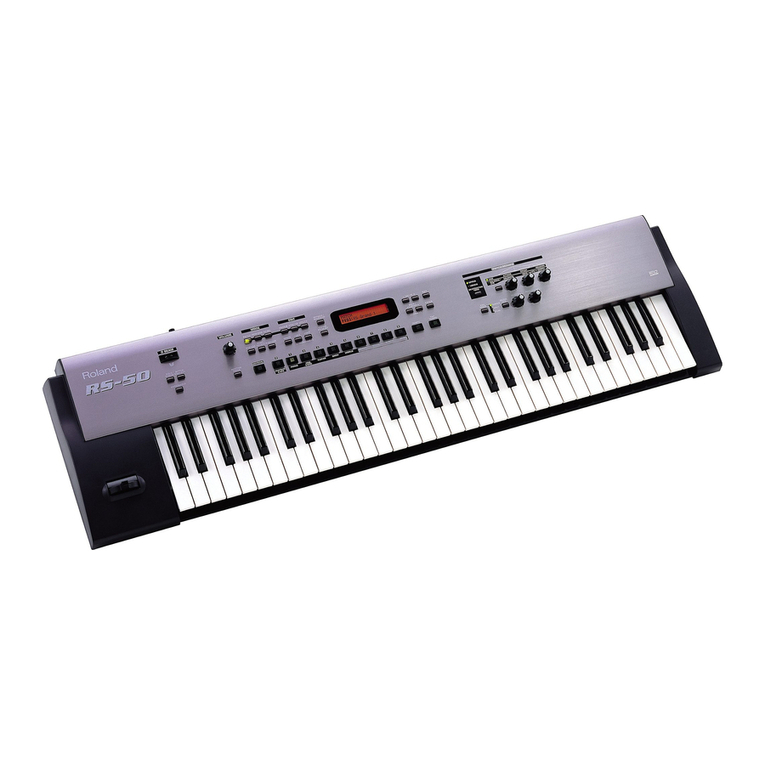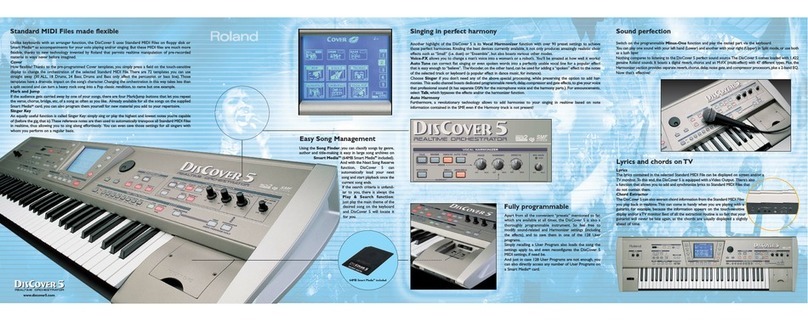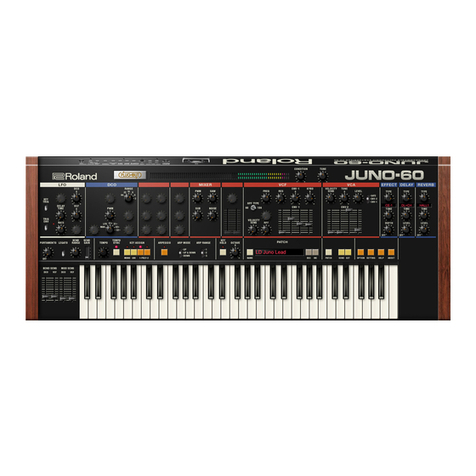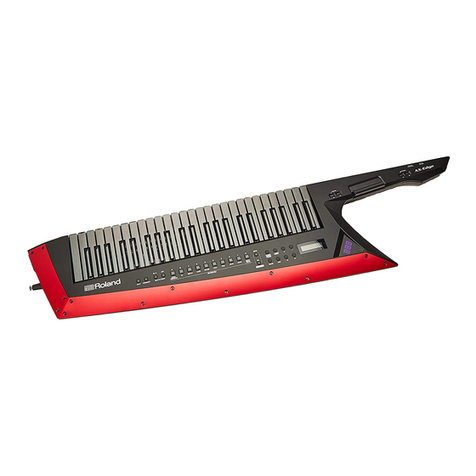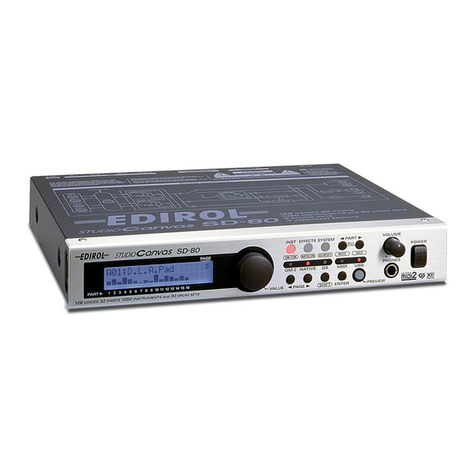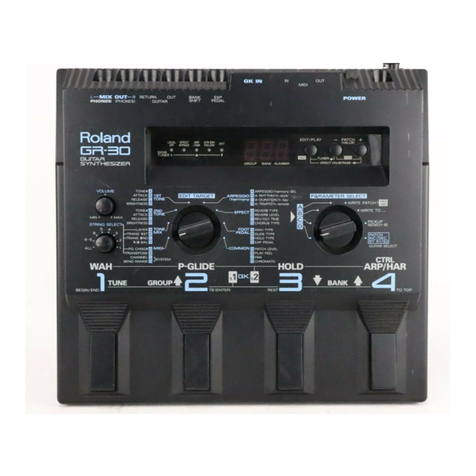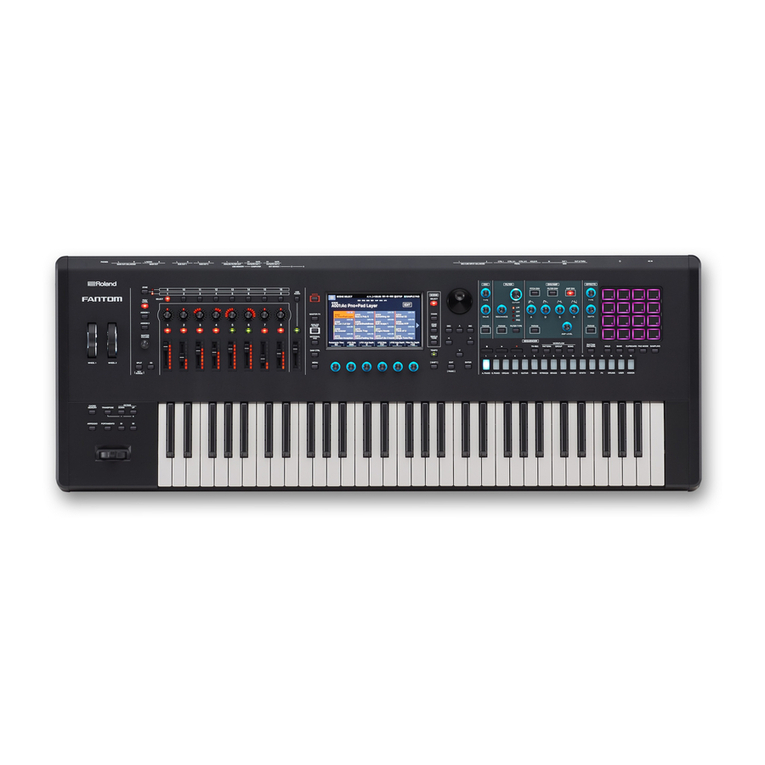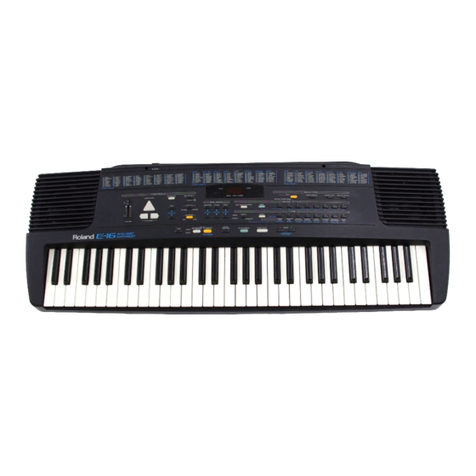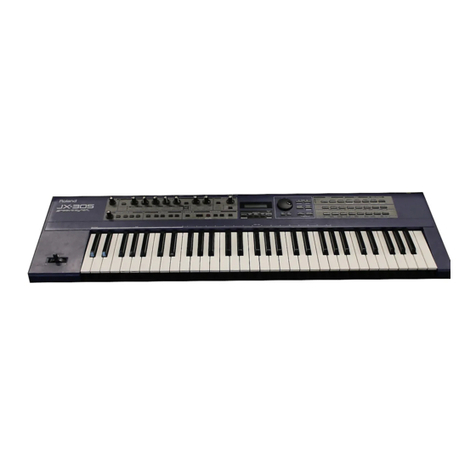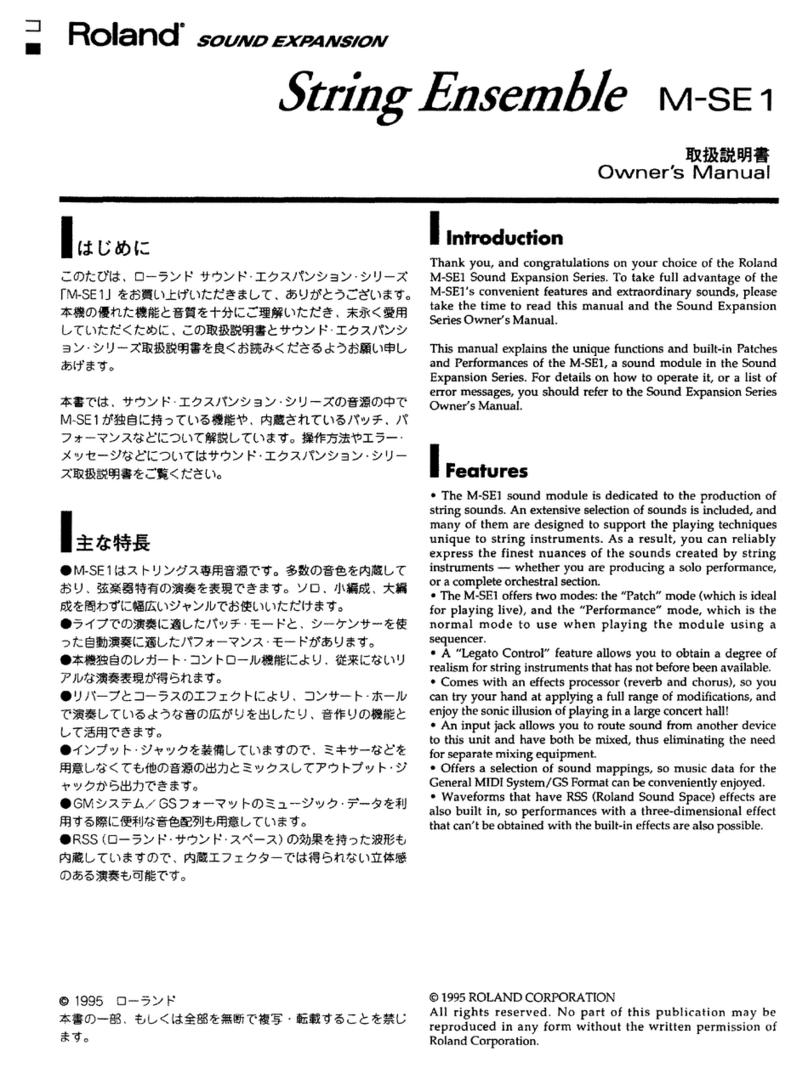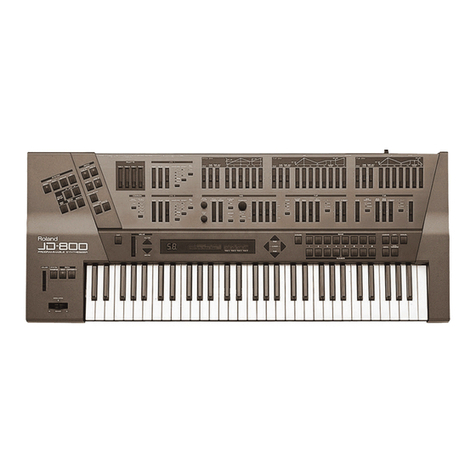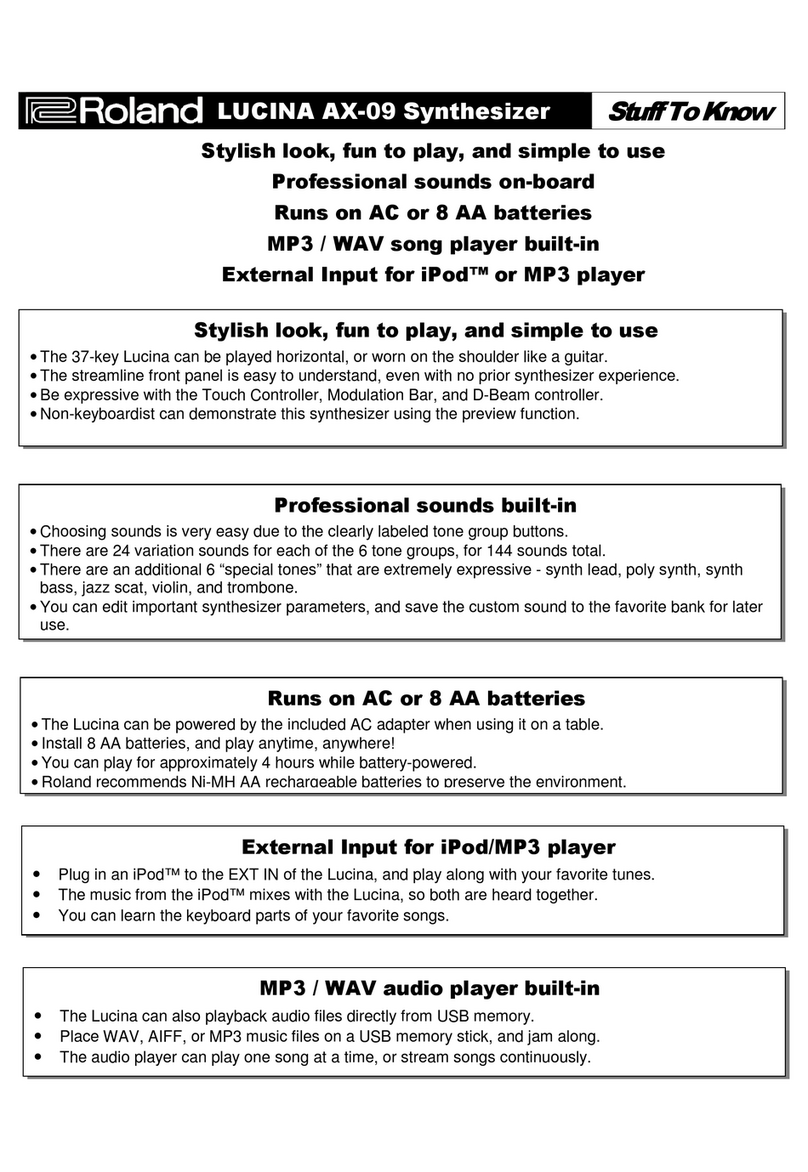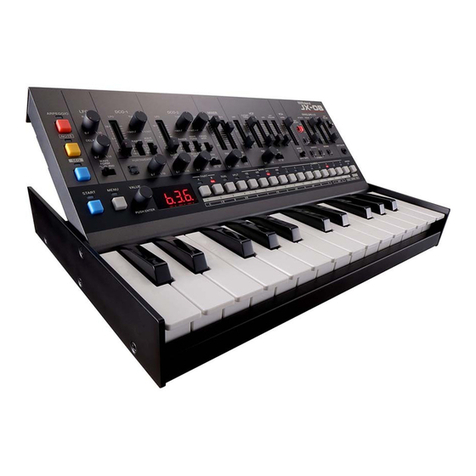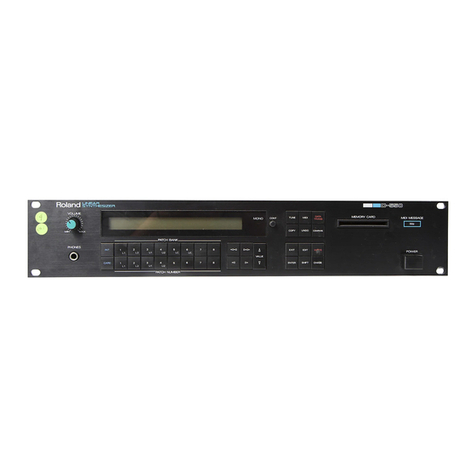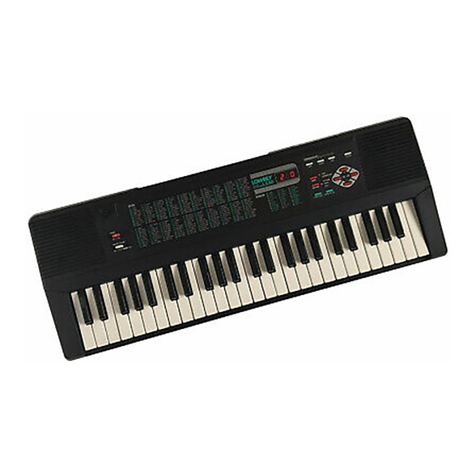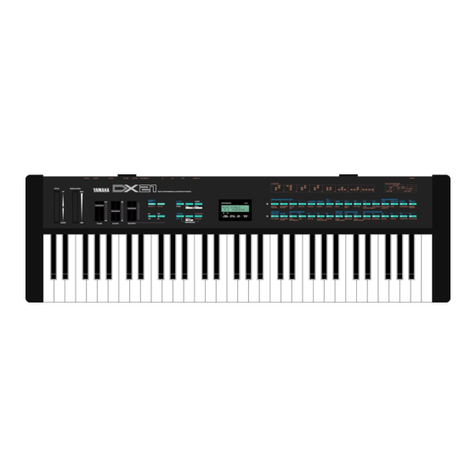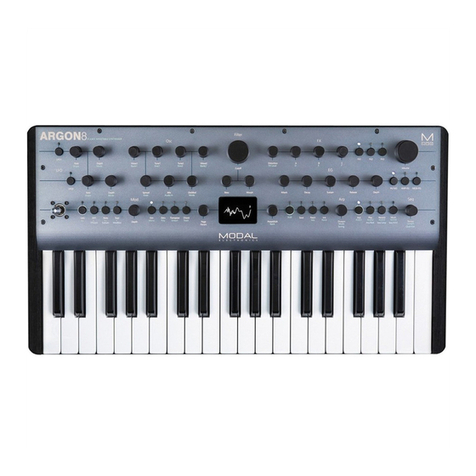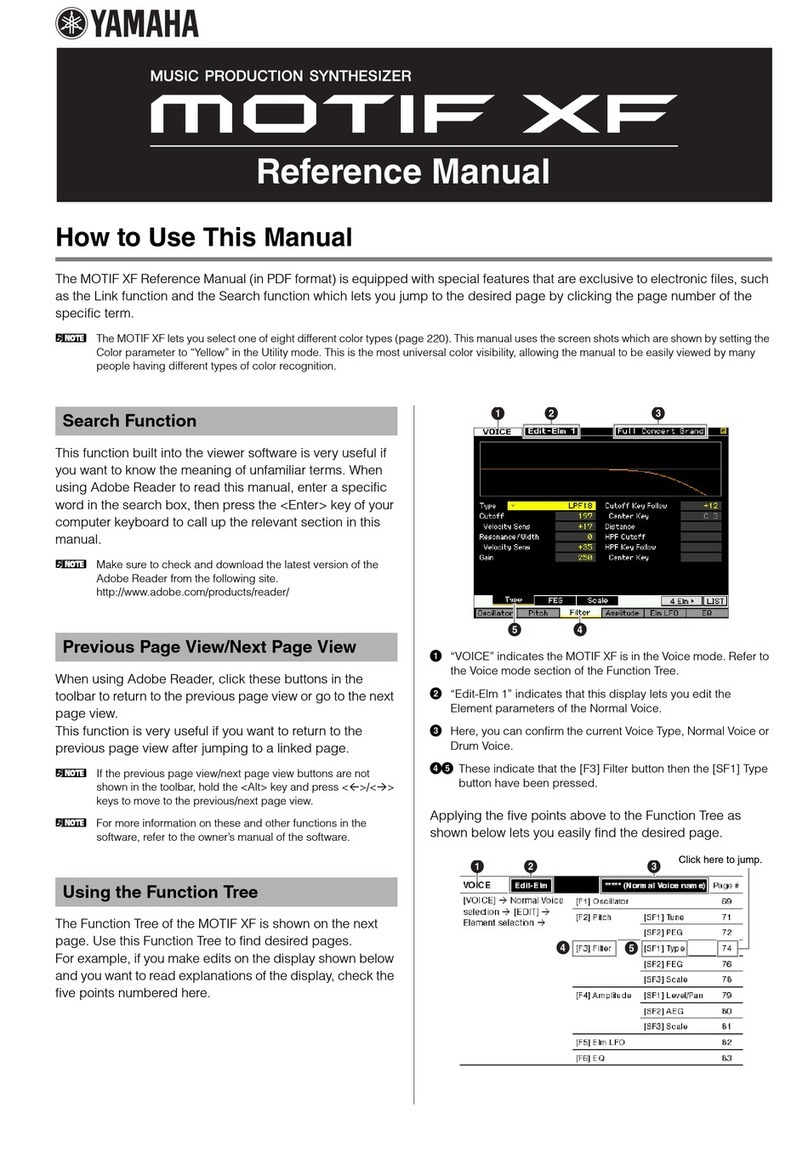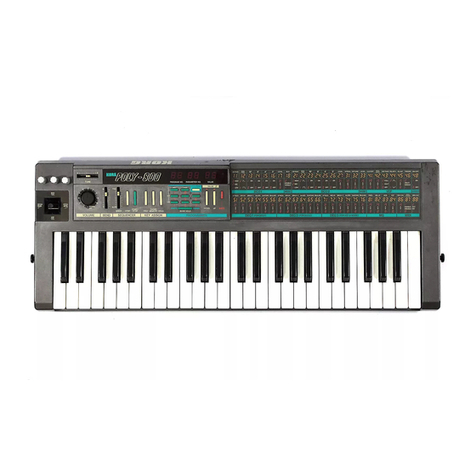Manual Version 3.21
Page. 3 of 73
1.1 INTRODUCTION
This manual is intended for all users that have upgraded their JX-10 to the new Vecoven firmware. If you’re not
sure what extra features are now available, read on. Or, if you are interested in something specific, you can jump
straight to the index to find what you’re looking for. To go to the index, click HERE.
To help with navigation, all words that are underlined and have hyperlinks on them can be used to jump directly to
the respective page.
The Roland JX-10 is a fully programmable 12 voice polyphonic synthesizer. Various sounds and performance
control functions can be stored, which can be immediately recalled and used.
•The JX-10 features a memory capacity that can retain up to 64 different programs (called “Patch Memory”)
which are the combinations of sounds (Tones) and performance control functions.
•Any of the Patch Memories can be recalled simply by pressing the appropriate buttons.
•Patch Memory you have written into memory can be easily edited at any time.
•Using optional M-64C Memory Cartridges, it is possible to expand the storage capacity.
•Thanks to the new and refined MIDI implementation the JX-10 can now be edited via sysex and dedicated
Editor Librarians such as EMAGIC SoundDiver®, SoundQuest MidiQuest®and other editors specially
designed for the Apple iPad. To dump and load patches there’s now no need to keep the M-64C cartridge
inserted.
•The 76 note keyboard and improved associated MIDI functions now serve to make the JX-10 an excellent
master keyboard.
New MIDI implementation
•Each parameter is now OFF/RECV/SEND/ON, allowing fine control of what gets sent and what is filtered.
•Sysex support : allows edit of patch, Tone A and Tone B individually. (No need for M-64C cartridge).
•Fast bulk dump/load : 4-5 seconds to dump everything. Can dump to/from cartridge and internal memory.
•Parameter edits (patch and tones) send sysex, so all edits can be sequenced. The PG-800 programmer is now
supported, so edits made from the PG-800 can also be sequenced.
•Copy from/to cartridge to create a full backup of the internal memory (all settings can now be copied to the
cartridge or restored from it).
•Later versions of firmware also have a few more additions. Check out the Firmware Versions - Page 64 for
further details.
Controls C1 and C2 enhancements
•Any tone parameter can now be assigned to C1 or C2.
•Any arpeggiator parameter can be assigned to C1 or C2.
•C1 and C2 can be used, in tone edit mode, to modify upper/lower tone parameters. This is a new feature and
allows quick editing of tones for those who do not own a PG-800 programmer.
Arpeggiator
•8 arpeggiator “patches”.
•Internal or external synchronisation.
•Supports up, down, up/down, as played and random note ordering.
•Various arpeggio types.
•Velocity setting (fixed or as played).
•Note duration (1-15 or legato).
•Use of lower split point to control which notes are arpeggiated.
PG-800 programmer support
•New display options.
•Control whether updates from sysex, PG-800 or controllers are displayed temporarily on-screen.
Compatibility mode
•Allows disabling of new features for full compatibility with old software (for example, sysex changes made to
tone A can be redirected to the currently selected tone, etc...)
Test modes
•Test hardware controllers (Voices, A/D controllers (Aftertouch, Bender, C1/C2), Keyboard)
•Test memory chips

